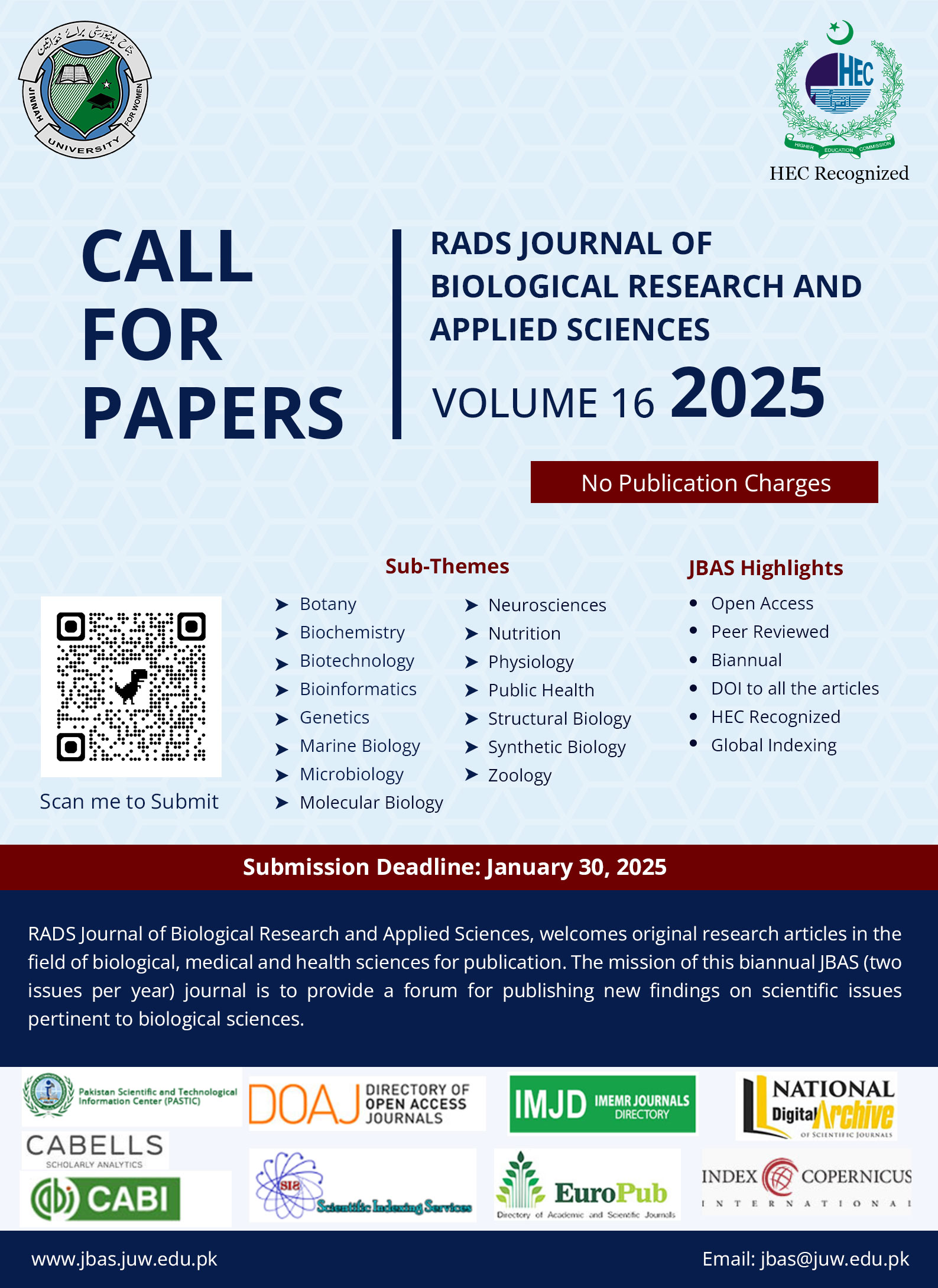Emergence of Antifungal Azole Resistance in the Fungal Strains of Tinea corporis, Tinea capitis, Tinea cruris and Tinea pedis from the Locality of Southern Punjab, Pakistan
DOI:
https://doi.org/10.37962/jbas.v12i1.348Keywords:
Antifungal Drug Resistance, Azoles, Dermatomycosis, Filamentous fungi, Sensitive Phenotype, Sterol biosynthesis.Abstract
Background: Dermatophytes are the most common group of fungi causing fungal infections all over the world. They are classified into three main groups Trichophyton, Microsporum and Epidermophyton. Among these, Trichophyton has the highest prevalence rate (70-90%) as compared to the others. The global emergence of fungal infections is varied due to the socio-economic conditions throughout the world. Developing countries, like Pakistan, are facing an increase in the number of dermatophytoses, including frequent relapses and treatment failures.
Objectives: The study have been conducted to identify the emerging fungal species, the role of commonly available antifungals such as azoles including voriconazole, ketoconazole, fluconazole and amphotericin B were used to determine the drug resistance among these species.
Methodology: Nine groups of dermatophytes and non-dermatophyte fungi isolated from the patients of tinea corporis, tinea cruris, tinea capitis and tinea pedis infections were analyzed for Phenotypic diversity, antifungal susceptibility and strains identification, was performed by cultural characteristics and microscopy.
Results: Nine groups of isolated fungal strains were identified as Trichophyton interdigitale, Trichophyton mentagrophyte, Trichophyton rubrum amongst dermatophytes class and Aspergillus terreus, Aspergillus verisocolor, Aspergillus niger, Acretonium sordidulum and Acremonium sclerotigenum of non-dermatophytes class.
Conclusion: The study revealed Trichophytone interdigitale group as more frequent dermatophytes. Whereas, among the antifungal drugs, fluconazole that targets the Erg 1 gene of ergosterol biosynthesis in fungi is less effective most common antifungal drugs available locally.


















